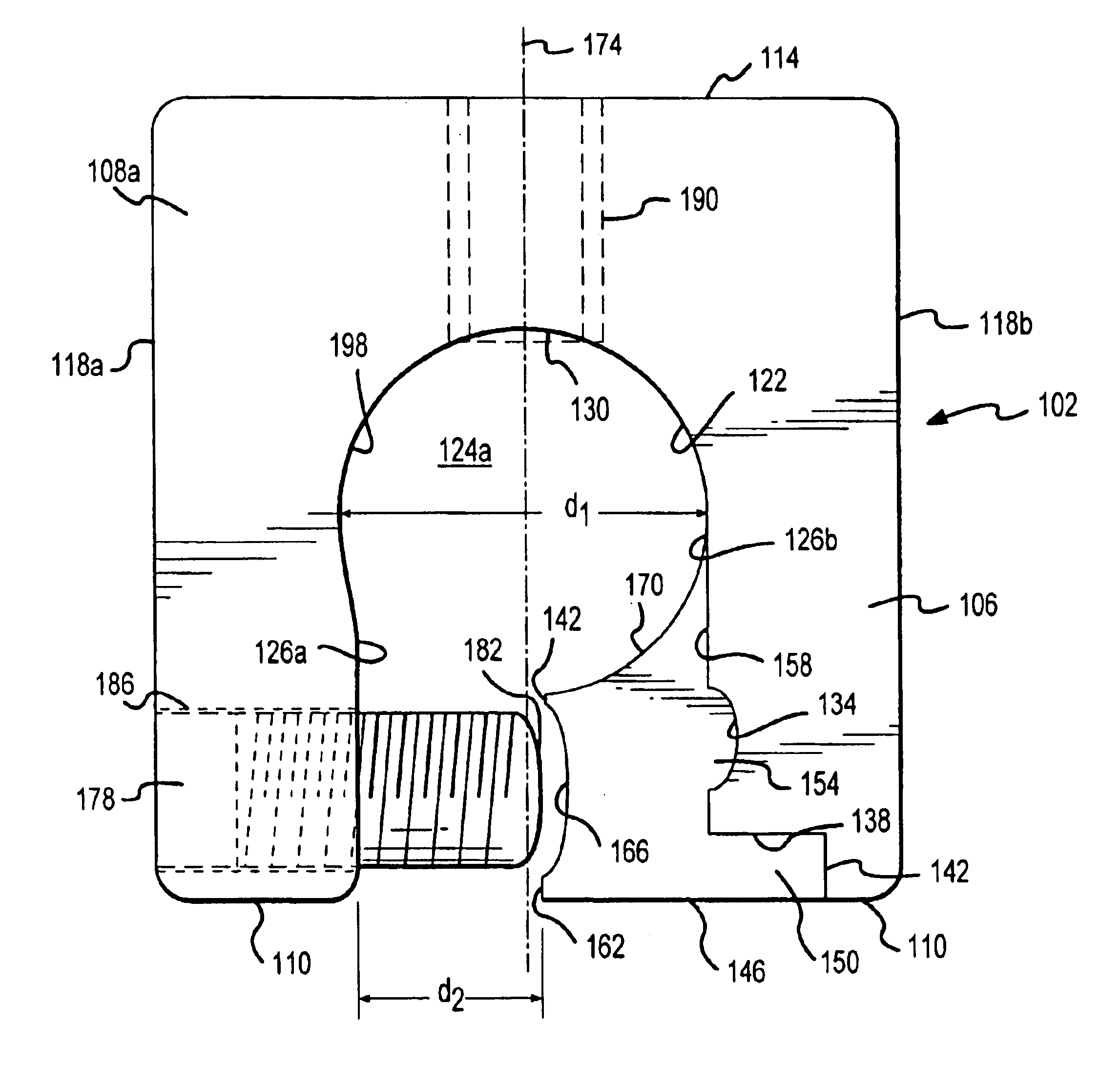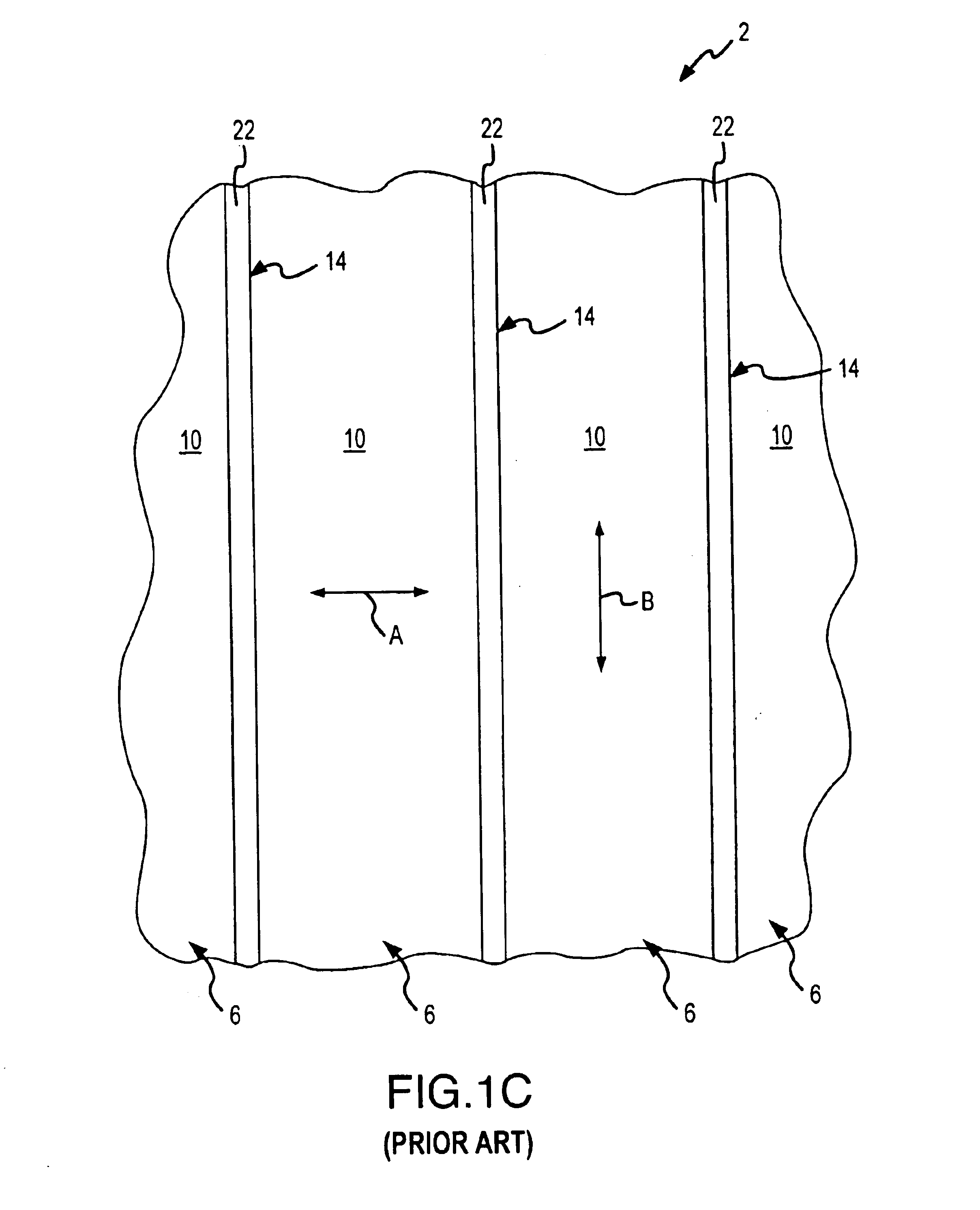Multi-piece clamp for standing seams
a multi-piece, standing seam technology, applied in the field of metal surfaces, can solve the problems of time required to complete the installation, inconvenience of installation, and the manner in which it must be installed on the standing seam, and achieve the effect of increasing the amount of force and increasing the resistan
- Summary
- Abstract
- Description
- Claims
- Application Information
AI Technical Summary
Benefits of technology
Problems solved by technology
Method used
Image
Examples
Embodiment Construction
[0050]The present invention will now be described in relation to the accompanying drawings which at least assist in illustrating its various pertinent features. FIGS. 5A-C present a clamp 102 that may be used with a standing seam profile of at least generally the type used by the panel assembly 2 of FIGS. 1A-C. For convenience, the clamp 102 will be described in relation to the standing seam 14. The clamp 102 generally includes a unitary or one-piece clamp body 106. Preferably the clamp body 106 is an extrusion of a material that is appropriate for the desired application of the clamp 102, such as aluminum, brass, or zinc. Other manufacturing techniques could also be utilized for making the clamp body 106, such as casting or machining. Extruding the clamp body 106 provides a number of advantages, including ease of manufacture and structural strength.
[0051]The clamp body 106 is defined by a pair of clamp body ends or end surfaces 108a, 108b that are longitudinally spaced (i.e., space...
PUM
 Login to View More
Login to View More Abstract
Description
Claims
Application Information
 Login to View More
Login to View More - R&D
- Intellectual Property
- Life Sciences
- Materials
- Tech Scout
- Unparalleled Data Quality
- Higher Quality Content
- 60% Fewer Hallucinations
Browse by: Latest US Patents, China's latest patents, Technical Efficacy Thesaurus, Application Domain, Technology Topic, Popular Technical Reports.
© 2025 PatSnap. All rights reserved.Legal|Privacy policy|Modern Slavery Act Transparency Statement|Sitemap|About US| Contact US: help@patsnap.com



